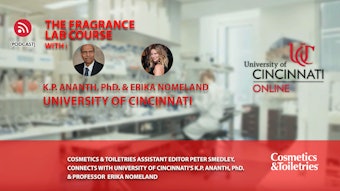Editor’s note: Part I of this review appeared in the October 2010 issue of Cosmetics & Toiletries magazine. Part II appeared in the January 2012 issue. Part III is presented here, and the final Part IV will appear in May 2012.
Part I of this review on Solid Lipid Nanoparticles (SLNs) and Nanostructured Lipid Carriers (NLCs) discussed the differences of these two delivery systems for cosmetic actives, as well as their production methods and selection criteria for constituents. In Part II, the characterization of these nano-sized particles was considered. In Part III, presented here, their stability and efficacy are considered; Part IV will address their application in cosmetics.
Active and Lipid Chemical Stability
The reason for including an active in a nanoparticle is not only to enhance skin delivery or controlled-release rate, but also, like liposomes and other deformable vesicles, to create a barrier to chemicals that may negatively influence the stability of the active. The following section deals with a couple of relevant cosmetic examples, illustrating how this can be investigated. The chemical stability of both the active and the lipid excipient can be at stake and are discussed separately here.










